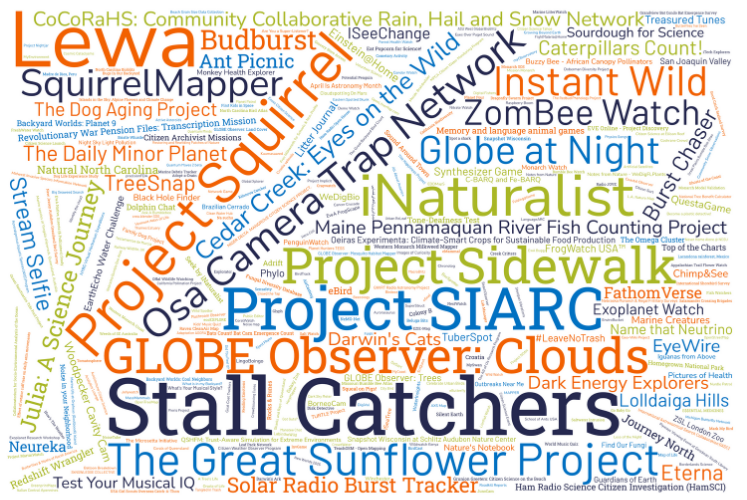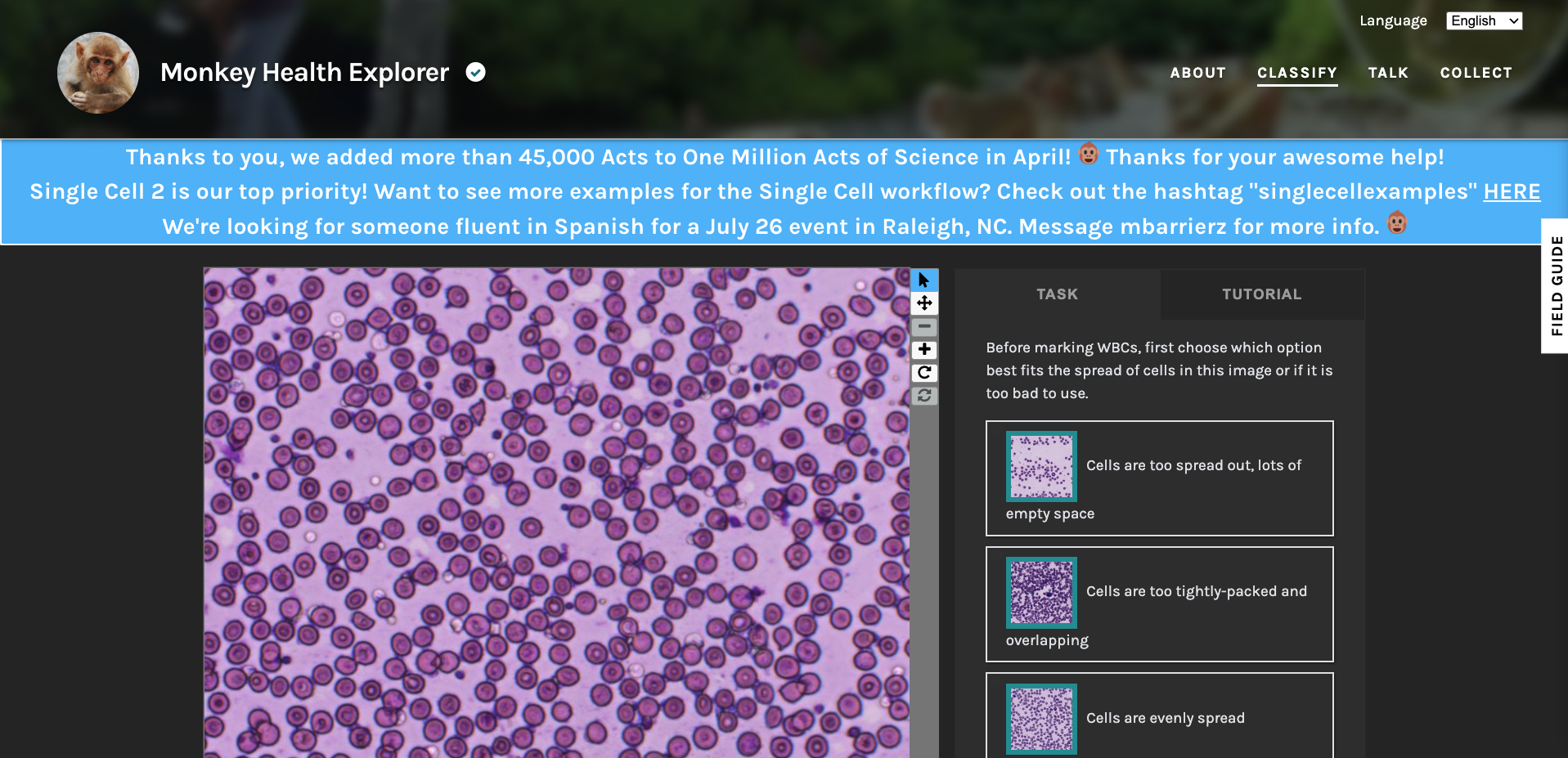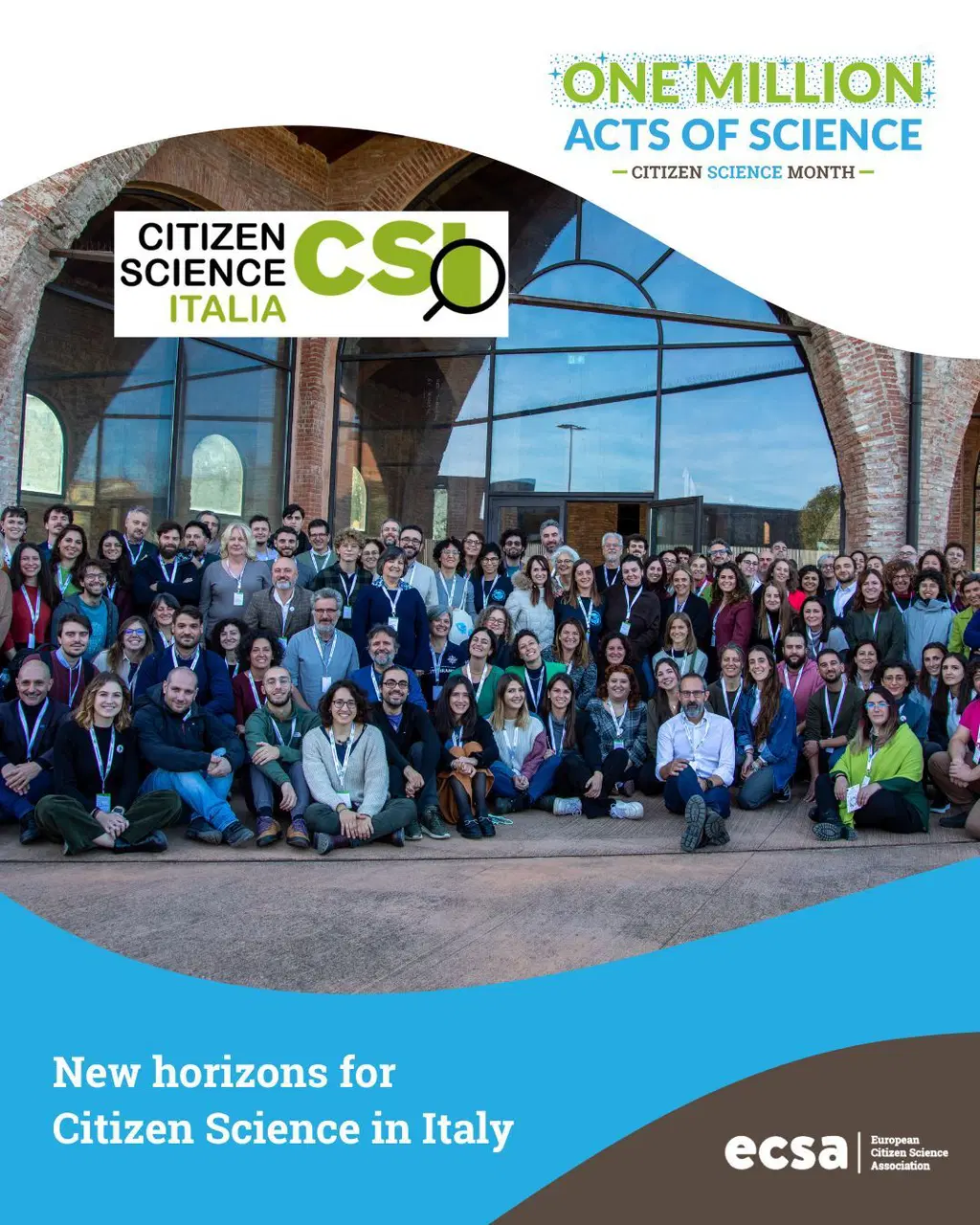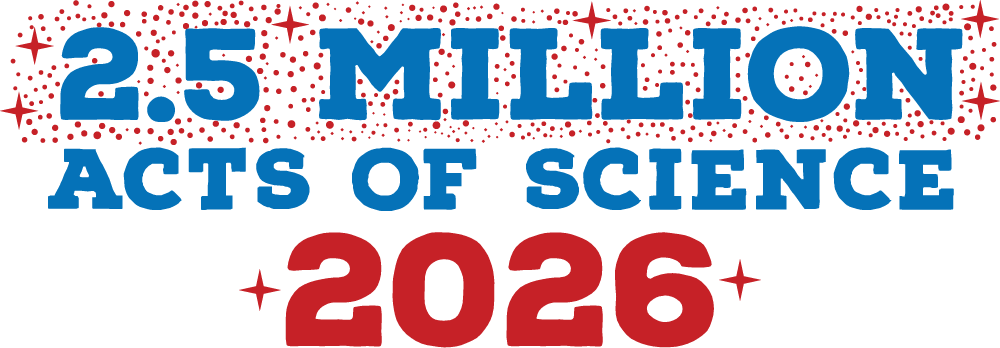Before we share outcomes from Citizen Science Month (CSM) 2025, check out our plans for CSM 2026!
In celebration of America 250, join a movement that highlights the power of everyday people to shape our future through science. Be part of history while shaping the future by participating in the “2.50 Million Acts of Science” challenge throughout April 2026—Citizen Science Month! With the support and expertise of Arizona State University and SciStarter, anyone can contribute to real scientific research just by sharing local observations, uploading photos, analyzing data, and more—all through simple, meaningful activities in your community.
Museums, libraries, and third spaces are cornerstones of civic life and curiosity. In April 2026, these trusted institutions will serve as launchpads for discovery, empowering individuals and families to join citizen science projects that ignite imagination and inform real-world research. Whether you’re birdwatching in a park, testing local water quality, or using a library computer to classify galaxies, your actions make a difference.
Together, we’ll celebrate America’s 250th birthday by honoring its legacy of innovation—and fueling its future—one act of science at a time. Your library. Your museum. Your community. Your discovery.
Sign up to join us in 2026.

Citizen Science Month 2025
Each April, during Citizen Science Month, SciStarter teams up with organizations to promote awareness of and engagement in real research projects that need help from the public. Simple acts from individuals, such as sharing observations about local weather to identifying animals in online images, add up to big impacts on research. We set a collective goal of reaching One Million Acts of Science in April. Participants TRIPLED that. On behalf of SciStarter, the SciStarter Ambassadors, and all of our partners, we thank each and every participant!
Nearly half a million volunteers from 136 countries contributed 3,039,361 Acts of Science in April 2025, benefitting close to 1,000 projects and events.
What We Learned
Started as a pilot project between SciStarter and the Association for the Advancement of Participatory Sciences in 2018, Citizen Science Month has grown to attract partners including Arizona State University and funders including the National Library of Medicine and others (listed at the end of the post). Through evaluation, feedback and data analytics, we’ve we gained many insights including:
Focus on Facilitators: Support for facilitators, particularly library staff, broadens participation, sustains engagement, and increases confidence introducing and doing citizen science.
Foster Ownership: Empowering project leaders with customizable tools and open-source materials increases investment and success.
Branding Matters: Framing activities as “Acts of Science” reduces jargon, inviting broader public interest and participation.
Champion Champions: Growing the SciStarter Ambassador network builds confidence, skills, and enthusiasm to expand citizen science in communities.
Participation Helps Project Teams: A record 78 project teams partnered with us this April to boost involvement in their projects. They shared messages on social media and their websites, hosted events, and sent us updates on participation. Early feedback shows that 82% felt positively impacted by being part of a larger movement.
Events

Citizen Science Month 2025 marked a major leap forward in both reach and participation thanks, in part, to 425 community events in April! That’s up from 250 events in April 2024. See previous years below in figure 1. During these events, people of all ages and interests were introduced to and participated in local projects and trainings, played Citizen Science Bingo to encourage participation in a minimum of four projects, and even weekend-long programs.

Much of this growth was powered by the energy and dedications of the SciStarter Ambassadors. Remarkably, some Ambassadors had joined the program just a month prior and still managed to organize and lead 169 events—about 40% of all programming. Libraries, long-time facilitators of citizen science, also played a major role, hosting a quarter of the events and continuing to serve as trusted, local science hubs. See more details in Figure 2.

Projects
Beyond the events, volunteers participated in a wide range of projects on SciStarter.org, contributing to everything from astronomy to zoology. This year, 78 citizen science project teams signed up to actively engage with us throughout the month—a welcome increase from the 17 teams who joined us in 2024. These projects reported participation data, collaborated on outreach, and helped us better understand the impact of coordinated engagement across multiple audiences. We look forward to learning more about how participation in CSM impacts project teams and active research.
One project leader, Sadie Coffin of Redshift Wrangler, reflected on the difference this made:

“The One Million Acts of Science campaign gave our project and participants renewed energy this month! We had new users trying out Redshift Wrangler for the first time and returning volunteers were particularly active helping answer questions or asking about our progress and updates. These contributions […] enhance our science results […] and help support our volunteer community by giving fresh insight into the questions and curiosities participants are most interested in […].”
Among the more than 1,000 projects listed on SciStarter, several hundred are designated as “Affiliates”—projects that use digital tools to help participants track their contributions across projects. Close to 300,000 of this year’s Acts of Science came from these Affiliate projects. In the past, SciStarter relied solely on this affiliate data to measure participation during Citizen Science Month. But as of 2024, we expanded our metrics to include broader “Acts of Science,” which allowed us to capture a fuller picture of community engagement. Figure 3 illustrates our collection of data across the years.

Volunteers
We also saw a major shift in participant behavior. Nearly 70% of SciStarter participants took part in two or more projects or events—more than double last year’s 30%. And nearly a third engaged in five or more projects, showing that curiosity and commitment are on the rise. Citizen scientists aren’t just dabbling—they’re diving in.

Social Media
Social media was a powerful catalyst during Citizen Science Month. More than 1,600 hashtagged posts across platforms reached over 14.1 million people and sparked 152,000+ community interactions — triple the activity from last year.
The hashtag #CitizenScienceMonth led in volume, with 603 posts reaching 8.7 million people. #OneMillionActsofScience followed with 472 mentions and a 1.9 million reach, helping to spotlight personal contributions. Notably, #SciStarter drove 104,000 interactions from just 77 posts — suggesting a strong connection with engaged communities.

These numbers aren’t just encouraging — they’re evidence of a growing, global movement. From casual participants to major institutions, the community showed up and showed off what citizen science looks like in action.
Follow us!
Facebook | Instagram | TikTok | LinkedIn | YouTube | Bluesky
Stories from the Field
Around the world, individuals and organizations embraced the spirit of Citizen Science Month—mobilizing their communities, contributing meaningful data, and amplifying awareness of the collective power of participation. We heard from participating libraries about all the programs organized throughout the month, including Lake Dallas Library’s Citizen Science Tuesdays and the New Brunswick Free Public Library’s Earth Day Celebration.


Girl Scouts Overseas once again hosted a virtual “Catchathon,” engaging Girl Scouts living abroad in the Stall Catchers project, which accelerates Alzheimer’s research. Scouts from the U.S., Spain, Japan, Germany, Taiwan, Portugal, and Italy analyzed over 5,000 brain vessel images—five times more than the 2024 Catchathon total!

In Nigeria, 32 volunteers from Unique Mappers filled critical data gaps using Open Map Data to support government and international humanitarian responses to flood-affected communities. Their work alone resulted in an impressive 65,134 Acts of Science in April.

More than 550 participants from 18 universities took part in the #LeaveNoTrash University Challenge organized by Leave No Trace. University of Florida, spotlighted below, picked up approximately 104 gallons of trash and submitted the data to the project! See all 2025 #LeaveNoTrash results on the CitSci.org Blog.

Corporate volunteers also showed up in force, contributing 21,307 Acts of Science, while weather watchers using CoCoRaHS submitted more than 460,000 reports on precipitation and conditions throughout April.
Our friends at Soldiers2Scientists celebrated with a biodiversity inventory of the Manassas National Battlefield Park with local Blue Star Families, amassing 465 observations in one day.

More federal agencies and media outlets produced and posted their own content to promote CitSciMonth and share outcomes: NOAA used the #OneMillionActsofScience hashtag in its posts featuring the stories of individuals driving its citizen science programs and highlighted the research advances made possible through public participation. NASA promoted citizen science month and used the #OneMillionActsofScience hashtag across its social media channels. Local news outlets, too, shared how community members like Haley Zoladz are making a difference through citizen science.
Meanwhile, platforms such as Zooniverse, CitSci.org, and project leaders across the globe leveraged the “One Million Acts of Science” campaign to reignite engagement and invite new and returning participants to contribute, adding banners to the top of their project pages to stimulate activity and reporting successes on social media.


The European Citizen Science Association played a key role in this effort, organizing a coordinated media campaign to highlight more than 70 citizen science projects and events across Europe, including the below post about “𝐍𝐮𝐨𝐯𝐢 𝐨𝐫𝐢𝐳𝐳𝐨𝐧𝐭𝐢 𝐩𝐞𝐫 𝐥𝐚 𝐂𝐢𝐭𝐢𝐳𝐞𝐧 𝐒𝐜𝐢𝐞𝐧𝐜𝐞 𝐢𝐧 𝐈𝐭𝐚𝐥𝐢𝐚” or the “New Horizons for Citizen Science in Italy.” The event featured three days of insightful presentations and discussions, followed by a dedicated 𝐂𝐢𝐭𝐢𝐳𝐞𝐧 𝐒𝐜𝐢𝐞𝐧𝐜𝐞 𝐃𝐚𝐲 with hands-on activities and engaging events for the public.

To see more from the month—including recordings of live events and interactive sessions—visit SciStarter’s YouTube channel.
Reflecting Across the Years
As Citizen Science Month 2025 came to a close, SciStarter took a moment to reflect on how far we’ve come. We looked back on seven years of April engagement—starting with Citizen Science Day in 2019, evolving into the launch of Citizen Science Month in 2020, and growing each year since. This retrospective journey was featured in a poster presented at the 2025 Conference for Participatory Sciences in Portland, Oregon, offering a visual story of the movement’s growth, impact, and momentum. Click here to see the poster up close.

Thank you for joining us! We can’t wait to see you again for April 2026 while we celebrate 250 years of the American Declaration of Independence!

Citizen Science Month (CSM), celebrated annually in April, is coordinated by SciStarter and Arizona State University, with promotional help and support this year from numerous partners: NASA, NOAA, STAR Net, Great Lakes Now Detroit PBS, the Association for Advancing Participatory Sciences, The European Citizen Science Association, the D-A-CH (Germany (D), Austria (A), and Switzerland (CH)) working group, CitizenScience.Asia, the Australian Citizen Science Association, The Association for Rural and Small Libraries, Science Friday, IFLScience, and others.
